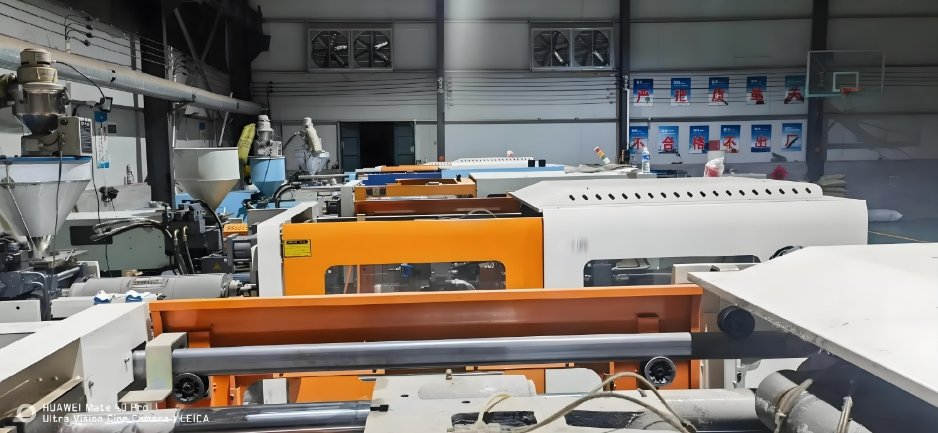
LED lighting is everywhere. It is used in homes, cars, streets, and electronics. These lights need strong and precise components. Electronic injection molding makes this possible. A mold maker designs and produces high-quality plastic parts for LED applications.
1. Why LED Lighting Components Need Precision
1.1 Heat Resistance
LEDs generate heat. Plastic parts must withstand high temperatures.
1.2 Optical Clarity
Light covers need transparency for maximum brightness.
1.3 Electrical Insulation
Insulated parts prevent short circuits.
1.4 Lightweight Design
Lighter materials improve energy efficiency.
1.5 Consistency in Mass Production
Injection molding ensures every part is identical.
2. Key LED Lighting Components Made with Injection Molding
2.1 Light Diffusers
Spread light evenly and reduce glare.
2.2 LED Lenses
Focus and direct light beams.
2.3 Heat Sinks
Help manage LED heat and improve lifespan.
2.4 Connector Housings
Protect electrical connections.
2.5 Reflectors
Enhance brightness by redirecting light.
2.6 Covers and Casings
Shield LEDs from dust, moisture, and impact.
3. Best Materials for Injection Molded LED Components
3.1 Polycarbonate (PC)
- High transparency
- Strong and impact-resistant
3.2 Acrylic (PMMA)
- Excellent optical clarity
- Scratch-resistant
3.3 Liquid Silicone Rubber (LSR)
- Heat-resistant
- Flexible for sealing and waterproofing
3.4 Nylon (PA)
- Durable and lightweight
- Used in electrical housings
3.5 Polybutylene Terephthalate (PBT)
- High electrical insulation
- Withstands extreme temperatures
4. The Injection Molding Process for LED Components
4.1 Step 1: Mold Design
A mold maker designs a precision mold.
4.2 Step 2: Material Selection
The right plastic is chosen for the component.
4.3 Step 3: Injection Molding
Molten plastic is injected into the mold.
4.4 Step 4: Cooling and Hardening
The plastic solidifies into shape.
4.5 Step 5: Ejection and Finishing
The part is removed, trimmed, and polished.
4.6 Step 6: Testing and Assembly
The component is tested for strength and clarity.
5. Benefits of Injection Molding for LED Lighting
5.1 High Precision and Uniformity
Every part meets exact specifications.
5.2 Lightweight and Strong
Plastic parts are durable yet light.
5.3 Cost-Effective Mass Production
Injection molding lowers production costs.
5.4 Enhanced Heat and Electrical Resistance
Parts can handle high temperatures and voltage.
5.5 Flexible Design Options
Complex shapes and custom designs are possible.
6. Challenges in Molding LED Lighting Parts
6.1 Material Selection for Clarity and Strength
Balancing transparency with durability is key.
6.2 Shrinkage and Warping
Careful molding prevents defects.
6.3 Heat Management
Some parts need extra cooling solutions.
6.4 UV Resistance Issues
Outdoor LED parts need protection from sunlight.
6.5 Recycling and Sustainability
Eco-friendly materials are a growing focus.
7. Innovations in Electronic Injection Molding for LEDs
7.1 Overmolding for Dual-Layer Protection
Combining materials enhances durability.
7.2 Conductive Polymers for Smart Lighting
New plastics improve LED performance.
7.3 AI-Optimized Mold Designs
AI helps create better mold structures.
7.4 3D-Printed Prototyping
Faster testing before mass production.
7.5 Automated Manufacturing
Robots improve speed and accuracy.
8. Future Trends in LED Injection Molding
8.1 Smart LED Components
Injection-molded parts will include sensors.
8.2 Eco-Friendly Bioplastics
More sustainable materials will be used.
8.3 Advanced Light Diffusion Technologies
New plastics will enhance brightness.
8.4 Customizable LED Designs
Injection molding will allow for unique shapes.
8.5 Faster Production with Advanced Mold Makers
New techniques will speed up manufacturing.
LED lighting needs precise, durable, and heat-resistant components. Electronic injection molding makes this possible. Mold makers ensure high-quality parts for lighting applications. As technology advances, injection molding will continue to improve LED performance.
